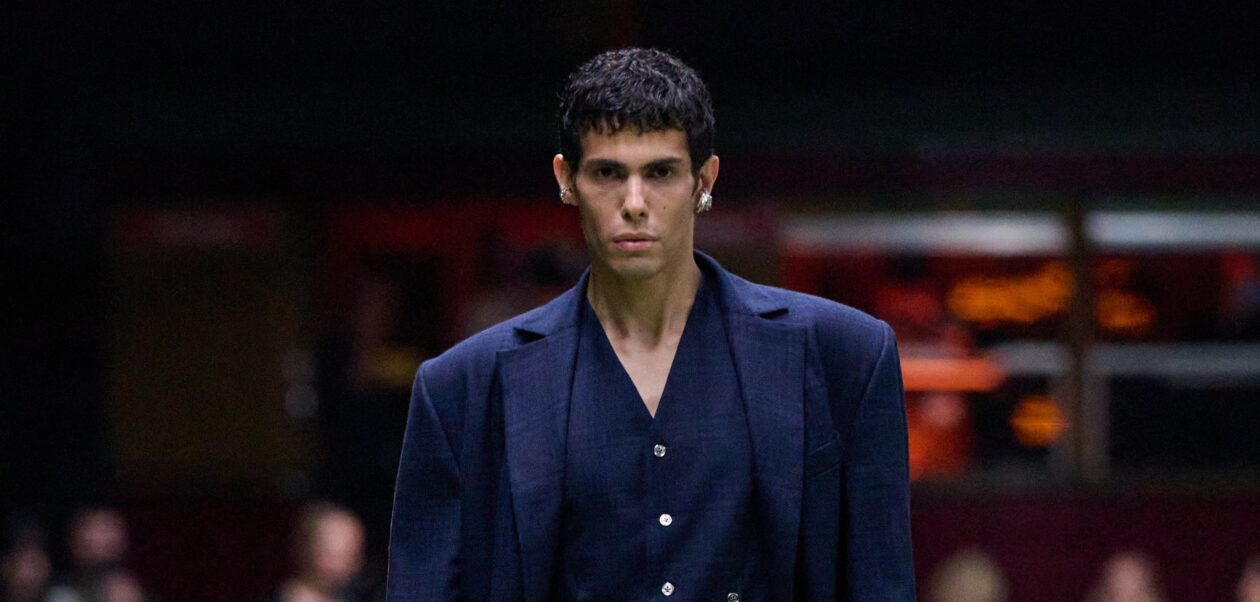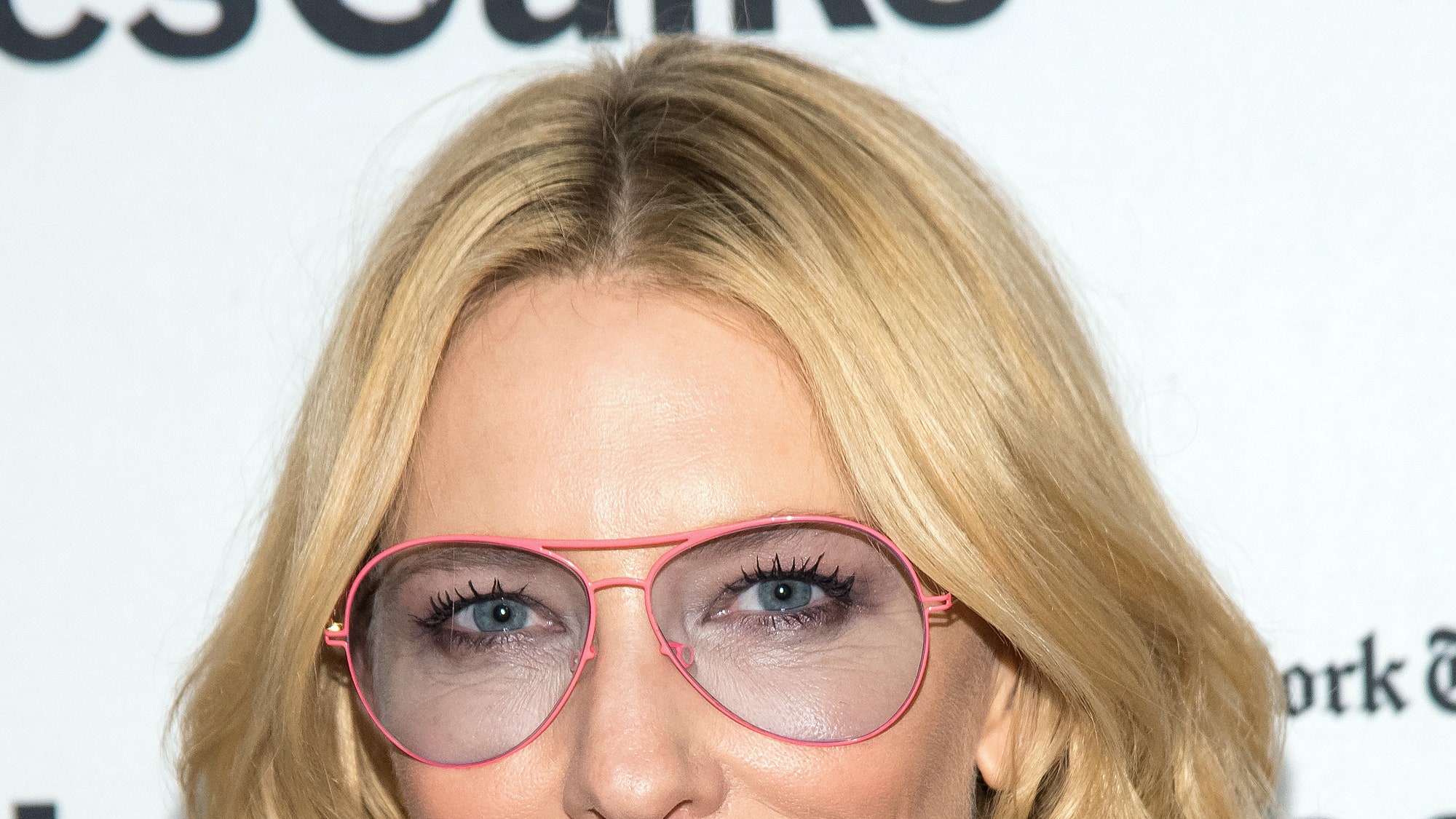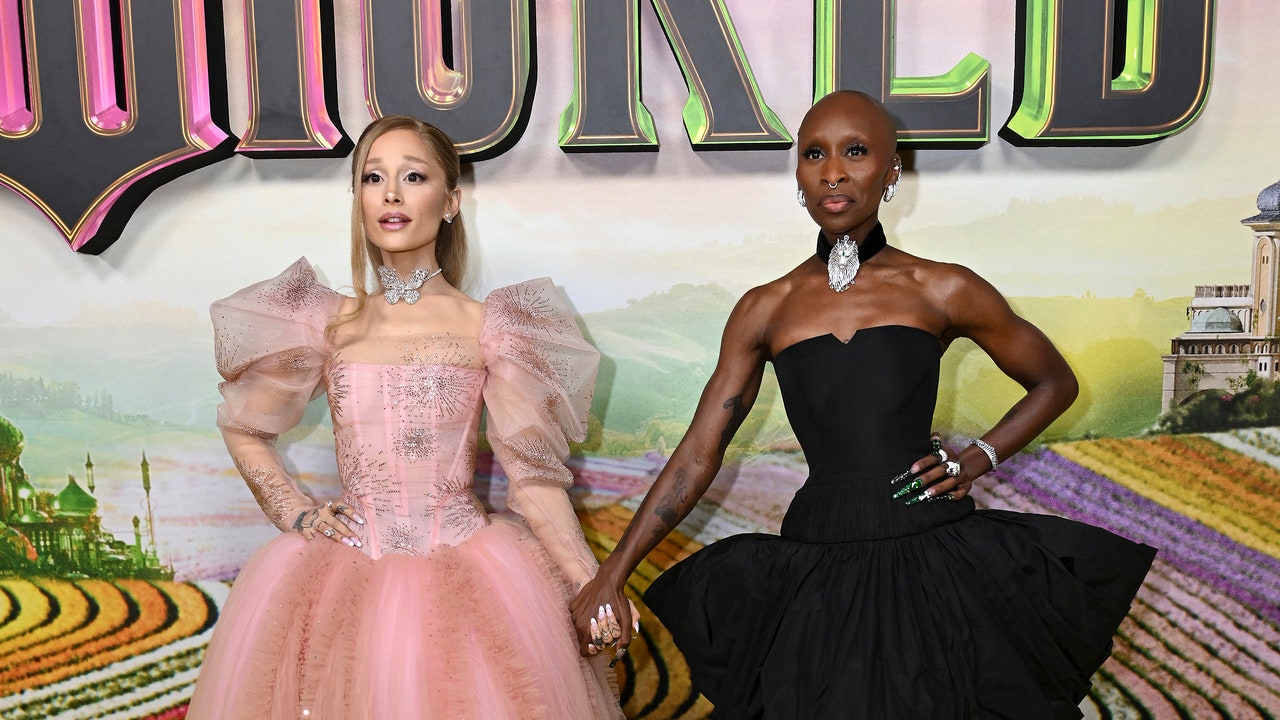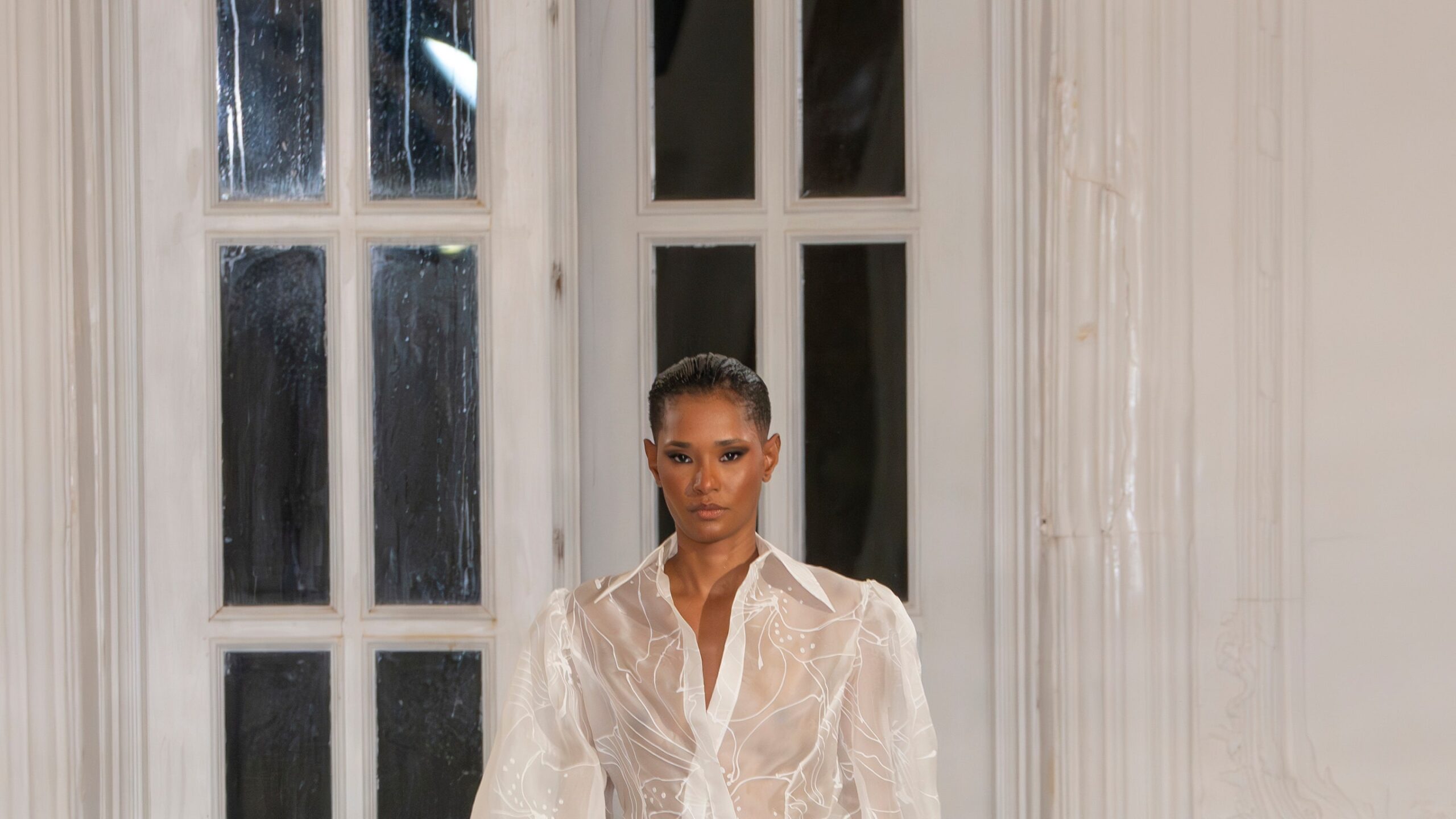How does that saying go? Go big or go home? Or instead you could just go big and put on a major runway show. If you have outsized ambitions for your brand, then maybe you have to act like you’re already there, because who knows? Maybe you already are—or at least are on your way to it. The Haderlump show certainly exhibited a bravura confidence about what it was saying, and it was big, big, big in doing so. As were the label’s clothes, which drew on a gritty, urban retelling of mid-century elegance, all broad shoulders, whittled waistlines, and flowing yet structured tailoring in shades of weathered and worn blacks and grays—and that was just the men’s.
Haderlump’s creative director Johann Ehrhardt, the showman of Berlin Fashion Week, took us late at night to the edge of the city to the gargantuan S Bahn Werk Schöneweide train depot, which he’d styled complete with a suburban station platform, on which one model stood forlornly waiting, one imagines, for the next service into the big bad city. (Somewhat of a PTSD moment for me witnessing this, what with the amount of times I’ve been similarly waiting, and waiting, and waiting, thanks to New York’s MTA.)
“You have to create a bigger picture,” said Ehrhardt moments after his show had finished. “So from the set design, the lights, the atmosphere—everything—the whole fashion show needs to be one image, a bit like the theater.” Given that last season Ehrhardt gathered everyone together at Tempelhof airport, one might think that he has a thing for travel, and he does, just not in the way you (or indeed I) might have imagined. The whole train thing started for Ehrhardt, rather surprisingly, with a story about Mahatma Gandhi, who, sometime in the 1940s, had lost one of his shoes running to catch a train. Gandhi had promptly thrown the other one out to join his missing footwear. Asked why, Gandhi had replied, Ehrhardt related, that someone would need both shoes, not one. “It was a wonderful and unselfish thing to do,” he said. “It took a bigger, kinder view of things. And we all need to do that right now, especially with the way the world is.”
Perhaps that’s why this show with all its bells and whistles worked, because at the end of the day, it wasn’t just about flexing brand muscle, but also trying to find a way to connect to some idea of where we are in the here and now; to bring a little emotion and sensitivity to the proceedings. And if Ehrhardt understands how to amp up the drama in his presentation, he also knows how to do it with his clothes. The Gandhi tale was what took him to the mid-20th century, so what resulted, he says, was thinking about, “the decades of the ’30s, the ’40s, and the ’50s, people rushing about in a station dressed in clothes from those eras, but wanting to make them look and feel modern.”
How did he do that? Certainly by giving everything—the men’s and women’s alike—a very Haderlump distressed and lived-in look; the crumpled wool sweeping overcoats whose hems trailed towards the floor, or the patch-washed slouchy jeans with their wide legs puddling around the feet. Other times, he’d mix ’50s heartthrob pin-up bomber jackets with a combo of fluid kilt-like skirting and voluminous trousers for the guys (that layering trick has been a recurring idea here in Berlin) with the same silhouette somewhat echoed with his sinuous women’s coats, with their snood-like hoods. That’s not all they shared. The very defined waist was for everyone, whether it came shaped by a corset—or not.




